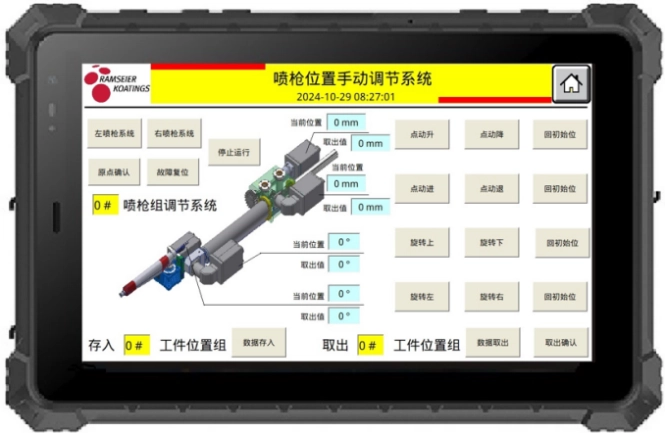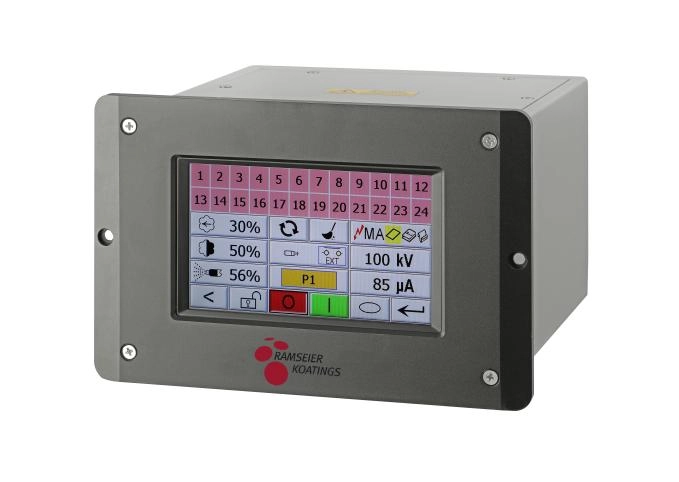Content Menu
● Understanding Integrated Control Systems in Manufacturing
>> What Is an Integrated Control System?
>> Benefits of Integration for High-Volume Production
● Key Components of Integrated Control Systems
>> Programmable Logic Controller (PLC)
>> Human-Machine Interface (HMI)
>> Supervisory Control and Data Acquisition (SCADA)
>> Manufacturing Execution System (MES)
>> Enterprise Resource Planning (ERP)
● How to Choose the Best Integrated Control System
>> 1. Compatibility and Integration Capability
>> 2. Scalability and Flexibility
>> 3. Reliability and Redundancy
>> 4. User Interface and Usability
>> 5. Data Management and Analytics
>> 6. Safety Features
● Implementing Integrated Control Systems Successfully
● Frequently Asked Questions
In today's competitive manufacturing landscape, high-volume production demands control systems that are not only reliable but also capable of integrating multiple processes seamlessly. Selecting the best integrated control system (ICS) for high-volume production involves understanding the core functionalities, benefits, and technological capabilities that drive efficiency, reduce downtime, and enhance product quality. This article explores the key features of integrated control systems, compares popular solutions, and provides guidance on choosing the optimal system for large-scale manufacturing environments.

Understanding Integrated Control Systems in Manufacturing
Integrated control systems unify various control components and processes within a manufacturing plant into a single, cohesive network. This integration enables real-time data sharing, centralized monitoring, and automated decision-making, which are crucial for maintaining high throughput and quality in high-volume production.
What Is an Integrated Control System?
An integrated control system combines hardware and software components such as Programmable Logic Controllers (PLCs), Human-Machine Interfaces (HMIs), Supervisory Control and Data Acquisition (SCADA) systems, and Manufacturing Execution Systems (MES) into one platform. This integration facilitates:
- Real-time monitoring and control of production lines.
- Data collection and analysis across multiple processes.
- Automation of complex workflows to minimize human error.
- Predictive maintenance to reduce unexpected downtime.
By harmonizing these elements, manufacturers gain a holistic view of their operations, enabling superior optimization and agility.
Benefits of Integration for High-Volume Production
For high-volume production, integrated control systems offer several critical advantages:
- Increased Efficiency: Automated coordination between machines and processes reduces cycle times and bottlenecks.
- Reduced Downtime: Predictive maintenance and online module replacement help keep production running smoothly.
- Improved Quality Control: Real-time data enables immediate detection and correction of defects.
- Enhanced Safety: Automated safety protocols reduce risks of accidents and ensure compliance with regulations.
- Cost Savings: Streamlined operations lower operational costs and resource waste.
These benefits collectively contribute to higher productivity and profitability in large-scale manufacturing environments.
Key Components of Integrated Control Systems
To select the best ICS, it is essential to understand the main components and their roles in high-volume production.
Programmable Logic Controller (PLC)
The PLC is the backbone of process automation. It collects data from sensors and machinery, executes control logic, and sends commands to actuators. Modern PLCs are designed for high reliability and can handle complex control tasks with minimal latency.
Human-Machine Interface (HMI)
The HMI provides operators with an intuitive interface to monitor and control the production process. Advanced HMIs offer graphical displays, alarms, and real-time analytics, enabling quick decision-making and system adjustments.
Supervisory Control and Data Acquisition (SCADA)
SCADA systems oversee the entire production process by aggregating data from PLCs and other devices. They provide centralized control, historical data trending, and remote access capabilities, which are vital for managing large-scale operations.
Manufacturing Execution System (MES)
MES bridges the gap between plant-floor control and enterprise resource planning (ERP). It manages production scheduling, quality tracking, and resource allocation, ensuring that manufacturing processes align with business objectives.
Enterprise Resource Planning (ERP)
ERP systems integrate operational data with business functions such as inventory, procurement, and finance. When linked with ICS, ERP provides insights into production efficiency and helps forecast demand and supply needs.
How to Choose the Best Integrated Control System
Selecting the best ICS for high-volume production depends on several factors:
1. Compatibility and Integration Capability
The system must seamlessly integrate with existing machinery, sensors, and software platforms. Look for open architecture systems that support multivendor networking and data exchange standards.
2. Scalability and Flexibility
High-volume production often requires adapting to new products or processes. Choose a system that can scale and be reconfigured without major overhauls.
3. Reliability and Redundancy
Downtime in high-volume production is costly. Systems with dual redundancy, online module replacement, and fault tolerance ensure continuous operation.
4. User Interface and Usability
An intuitive HMI reduces operator errors and training time. Systems that provide clear visualization and easy control adjustments enhance productivity.
5. Data Management and Analytics
Effective data integration across PLCs, MES, and ERP systems enables predictive maintenance, quality control, and operational optimization.
6. Safety Features
Integrated safety protocols and automated hazard detection protect workers and equipment, reducing accident risks.
Implementing Integrated Control Systems Successfully
Successful ICS implementation requires careful planning and execution:
- Assessment of Current Processes: Understand existing workflows and identify integration points.
- Customization: Tailor the system to specific production needs.
- Training: Equip staff with the skills to operate and maintain the system.
- Continuous Improvement: Use data analytics to refine processes and update control strategies.
Frequently Asked Questions
Q1: What is the main advantage of integrating control systems in high-volume production?
A1: The main advantage is the ability to optimize the entire production process through real-time data sharing and automation, leading to increased efficiency, reduced downtime, and improved product quality.
Q2: How does predictive maintenance work in integrated control systems?
A2: Predictive maintenance uses real-time data and analytics to identify equipment wear or faults before they cause breakdowns, allowing maintenance to be scheduled proactively.
Q3: Can integrated control systems work with existing legacy equipment?
A3: Yes, many modern ICS platforms support reuse and integration of existing instrumentation and control assets, facilitating gradual upgrades.
Q4: What role does the Manufacturing Execution System (MES) play in ICS?
A4: MES manages the production lifecycle, coordinating raw materials, workflows, and quality control, acting as a bridge between plant-floor control and enterprise systems.
Q5: How do integrated control systems improve workplace safety?
A5: They automate safety protocols, detect hazards quickly, and reduce human error, thus minimizing accidents and ensuring compliance with safety standards.

[1] https://quadplus.com/benefits-of-seamless-control-systems-integration/
[2] https://zh-style-guide.readthedocs.io/_/downloads/zh-cn/latest/pdf/
[3] https://www.global.toshiba/ww/products-solutions/smart-manufacturing/controller/product/ciemac-vs.html
[4] https://jphe.amegroups.org/article/view/4265/10863
[5] https://allan-ics.com
[6] http://www.tup.tsinghua.edu.cn/upload/books/yz/085177-01.pdf
[7] https://www.crbgroup.com/insights/food-beverage/control-systems-integration-introduction
[8] https://www.britishcouncil.org/sites/default/files/kvl-chinese-technical-v1.00.xlsx
Hot Tags: China, Global, OEM, private label, manufacturers, factory, suppliers, manufacturing company










































 .
. 